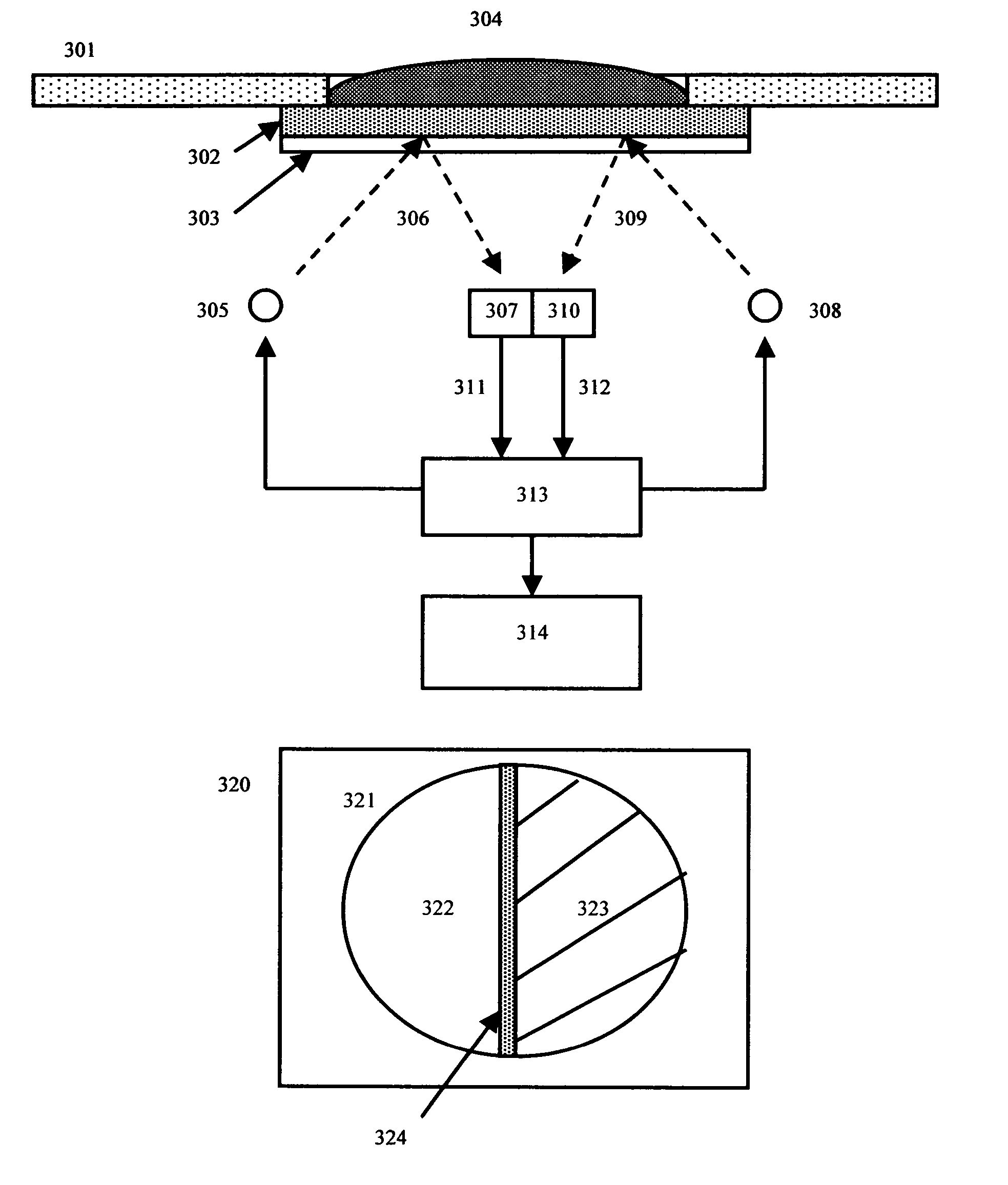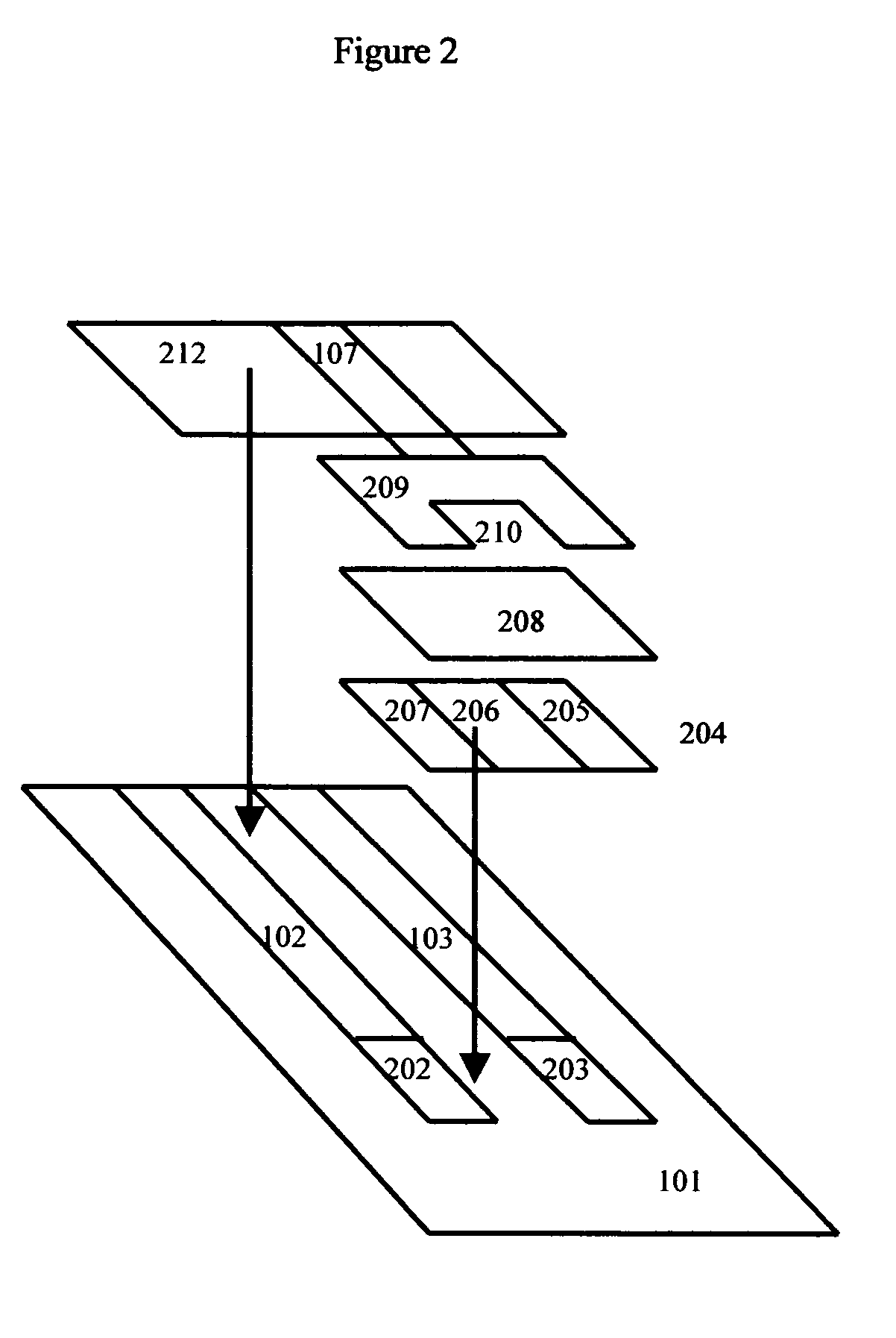Dual glucose-turbidimetric analytical sensors
a glucose-turbidimetric and analytical sensor technology, applied in the direction of chemical indicators, instruments, material electrochemical variables, etc., can solve the problems of inability to teach mixed electrochemical/optical devices or pure optical devices, inability to analyze 1-10 ul volume whole blood samples, and inability to accurately estimate etc., to achieve accurate estimation of the true concentration of chylomicron, the effect of high compatibility
- Summary
- Abstract
- Description
- Claims
- Application Information
AI Technical Summary
Benefits of technology
Problems solved by technology
Method used
Image
Examples
example 1
Combined “Sandwich” Electrochemical Glucose, B-Hydroxybutyrate Sensor with Glucose and Beta-Hydroxybutyrate Electrodes on a First Surface, and a Single Reference Electrode on a Second Surface
[0073] The “sandwich” design has certain advantages from the user interface perspective. This design acts to “sip” a small drop of blood into an interior cavity formed by the various layers. This helps to partially protect the sample from the outside environment during the reaction.
[0074] Although in examples 1 and 2 given here, glucose oxidase type electrodes are illustrated, it should be understood that the principles taught herein would apply to glucose dehydrogenase type electrodes and electrodes for other enzymatically detected analytes.
Methods:
[0075] A detailed discussion of the methods to construct suitable NADH and Hydrogen peroxide specific electrodes, as well as glucose and hydroxybutyrate specific electrodes, was previously discussed in parent application Ser. No. 10 / 264,206, par...
example 2
Multi-Layer Combined Glucose, Beta-Hydroxybutyrate Sensor
[0087] In an alternative embodiment, a porous spacer layer may be coated on top of the two sensor electrodes, and the reference electrode in turn coated on top of the spacer layer. Because the reference electrode is now elevated a significant distance above the primary support, an elevated stage with a secondary-conducting path may be added. Here a drop of blood is added directly to the primary support.
[0088] This “flat” reagent has its own unique set of advantages. Its more open design facilitates manufacturing. Additionally, some users may prefer applying sample to the more open reagent area.
[0089] This scheme is shown in FIG. 2. In this scheme, conducting electrical paths (102, 103) are laid down on support (101) followed by the glucose and beta-hyroxybutyrate electrodes (202, 203). Usually this is done by a screen-printing process. In subsequent screen-printing processes, porous spacer layer (204) is printed to help flu...
example 3
Optical Combined Glucose / Beta-Hydroxybutyrate (or Other Relevant Second Analyte) Test Strip
[0092] In this example, a blood separating membrane, such as the membranes produced using the highly asymmetric membrane technology of the Filterite division of Pall corporation (“asymmetric polysulfone membranes”, see U.S. Pat. Nos. 4,774,192 and 5,968,836) may be used to conduct the basic reaction. Typically filter membranes rated between 0.8 and 0.2 microns are preferred for this purpose. Asymmetric polysulfone membranes, used in this example, have a variable porosity structure with a large pore side on one side of the membrane, where sample is typically applied, and a small pore side, where the reaction results are typically observed.
[0093] Red cells in the blood sample applied to the large pore side migrate only partially into the membrane matrix, where they become trapped. By contrast, the plasma portion of the blood is free to move all the way to the small pore side. The membrane has ...
PUM
 Login to View More
Login to View More Abstract
Description
Claims
Application Information
 Login to View More
Login to View More - R&D
- Intellectual Property
- Life Sciences
- Materials
- Tech Scout
- Unparalleled Data Quality
- Higher Quality Content
- 60% Fewer Hallucinations
Browse by: Latest US Patents, China's latest patents, Technical Efficacy Thesaurus, Application Domain, Technology Topic, Popular Technical Reports.
© 2025 PatSnap. All rights reserved.Legal|Privacy policy|Modern Slavery Act Transparency Statement|Sitemap|About US| Contact US: help@patsnap.com



